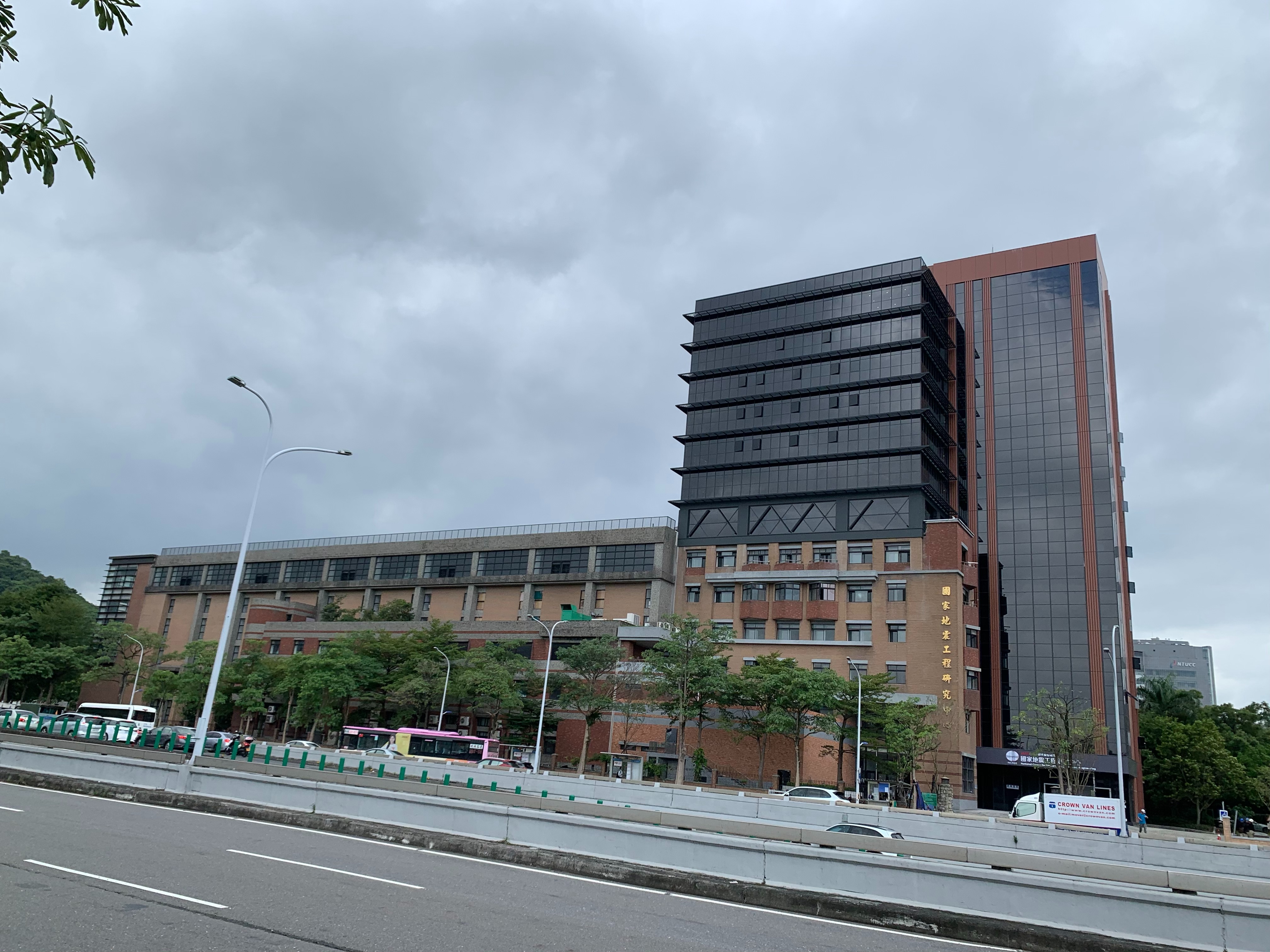Taiwan is located at a seismically active zone. Building safety, therefore, has been a critical issue for establishing a resilience society.
Providing post-earthquake restoration and disaster reduction when encountering earthquake catastrophes, the National Center for Research on Earthquake Engineering (NCREE) – one of the National Applied Research Laboratories (NARLabs) – implements the Science and Technology for Disaster policy planned by the Ministry of Science and Technology (MOST) and utilizes the extension building of NCREE. This has resulted in the creation of a smart earthquake-resistant demonstration building by using seismic retrofitting and quake resistance techniques, and integrating with the monitor and control systems which consist of early earthquake warnings and smart internet technology.
This system will raise an alarm before the seismic waves arrive, connecting the IoT system (monitors and smart disaster systems) and activating automatic disaster prevention services, such as controlling elevators and shutting down the main power supply to avoid fires, guiding evacuations, etc. This system will also automatically monitor the seismic response of the building for rapid evaluation of structural damage. With all these techniques and systems, the new NCREE building will tell the story on its own, and will provide smart seismic disaster reduction strategies for Taiwan.
The Extension and Reopening Ceremony of NCREE was held on November 9th, 2020. The ceremony was hosted by Dr. Chung-Ming Kuan, president of National Taiwan University. Dr. Samuel Yen-Liang Yin, chairman of the Ruentex Group, and Dr. Kuang-Chong Wu, president of NARLabs, who were joined by many distinguished guests to witness an enormously important milestone for the development of earthquake engineering in Taiwan. NCREE will continue collaborating with the Department of Civil Engineering at National Taiwan University and establishing advanced seismic disaster reduction techniques in the future.
Unlocking Refined Architecture and Offering New Strategies of Sustainable, Seismic-safe Buildings for Earthquake Zone Countries
Under the instructional guidance of the Ministry of Science and Technology (MOST), NCREE serves as a leading role in developing Taiwan’s frontier earthquake engineering technologies, fostering high-tech manpower and establishing international connections for the purposes of innovation, competitiveness, and sustainable development in scientific research. NCREE also plays a crucial role in maintaining a national seismic engineering laboratory, providing large scale tests services, supporting earthquake engineering academics in disaster reduction research, assisting with earthquake resistance problems across the country and the world, as well as innovating earthquake disaster reduction engineering technologies that are suitable for Taiwan’s geological and geophysical characteristics and social needs.
Over the past 30 years, NCREE has earned a formidable reputation around the globe, while its original Taipei Laboratory has also become the symbol of NCREE. The extension plan of NCREE aims toward the idea of sustainability, “adding” instead of “rebuilding”, to maintain Taiwan’s historic and symbolic meaning in earthquake engineering and research significance. The design group decided to add seven stories of steel structure on the original six-story reinforced concrete (RC) building, becoming a thirteen-story steel reinforced concrete (SRC) building. To increase space efficiency, the design group extended the site area to centralize elevators, stairs, and piping closets at the newly added steel structure service core.
The extension of NCREE was quite a challenge in terms of design and construction techniques. This building’s extension had to integrate construction undertaken during different eras and solve the connection and transition problems between RC and SRC engineering materials. The newly added steel structure service core also made the floor area’s shape asymmetrical. Therefore, the problem of structural twisting during an earthquake also became the focal point.
Upgrading Seismic Capacity through Seismic Retrofitting and Seismic Control Technology
To meet the requirements for current seismic design guidelines, the seismic retrofitting of the existing structure became an important issue during this extension project. After a detailed seismic assessment and design, retrofitting techniques such as thickening walls, adding shear walls and CFRP anchor beams were all adapted to enhance seismic capability. To solve the structural twisting problem of the steel structure service core, NCREE installed its self-developed seismic control components of buckling-restrained brace (BRB) and steel panel damper (SPD) to enhance the building’s seismic capacity.
Creating New Standards in "Earthquake-resistant Smart Buildings" by Applying Smart IoT Systems
NCREE has installed its self-developed early earthquake warning and structural monitor systems in the extended building to record the structural seismic responses and instantly report post-earthquake diagnoses and expedite functionality restoration. The“5D Smart ES Platform”, originally created by NCREE, is an IT operation and maintenance platform consisting of 3D digital models, time information, and all types of sensors to integrate virtual and real-time conditions for monitoring and recording the laboratory’s situation twenty-four seven, thus creating a real “Smart Laboratory.”
In the year of 2020, NCREE is celebrating its 30th anniversary and making the Taipei Laboratory extension project an important milestone in earthquake-resistant smart building development. NCREE will continue promoting the policy of developing smart disaster reduction cities and earthquake-resistant structures to transform Taiwan into a sustainable and seismic-safe homeland within the next 30 years.

East view of the new building.